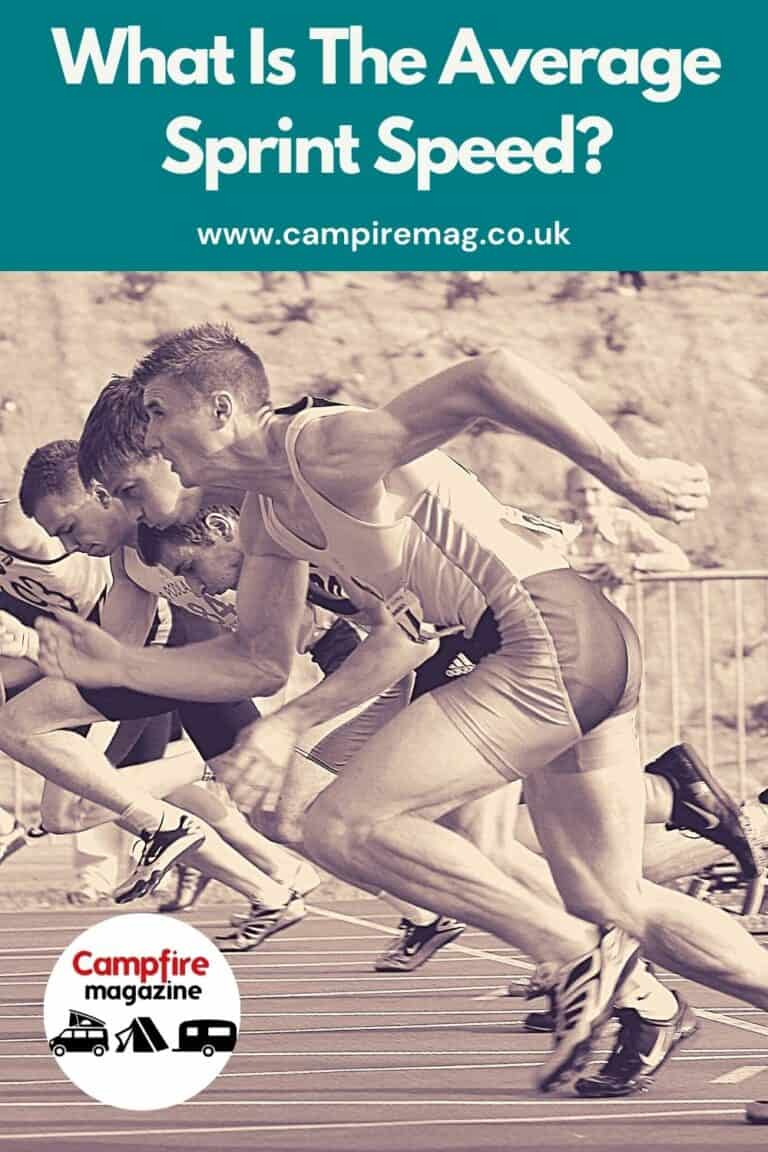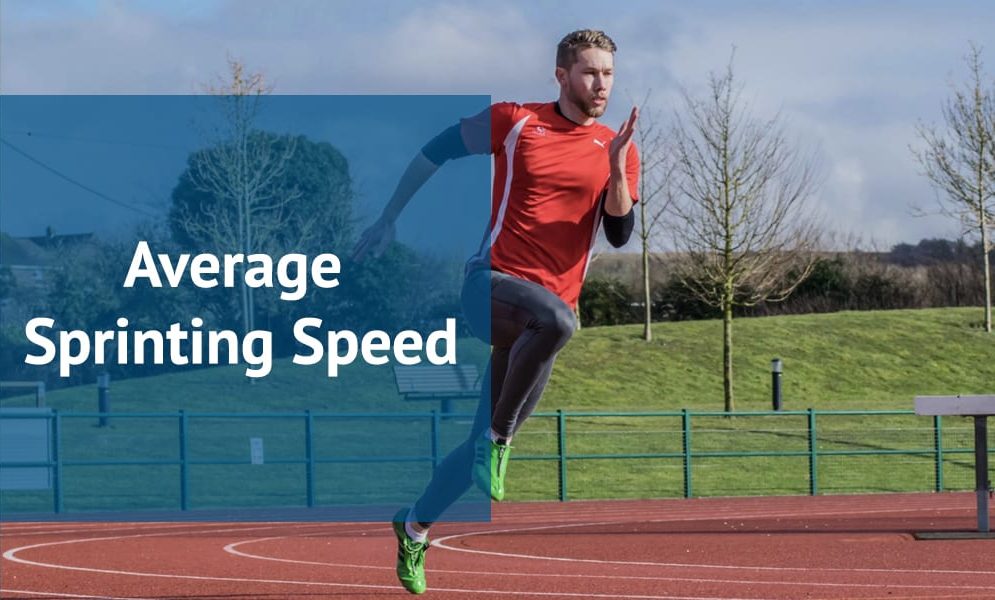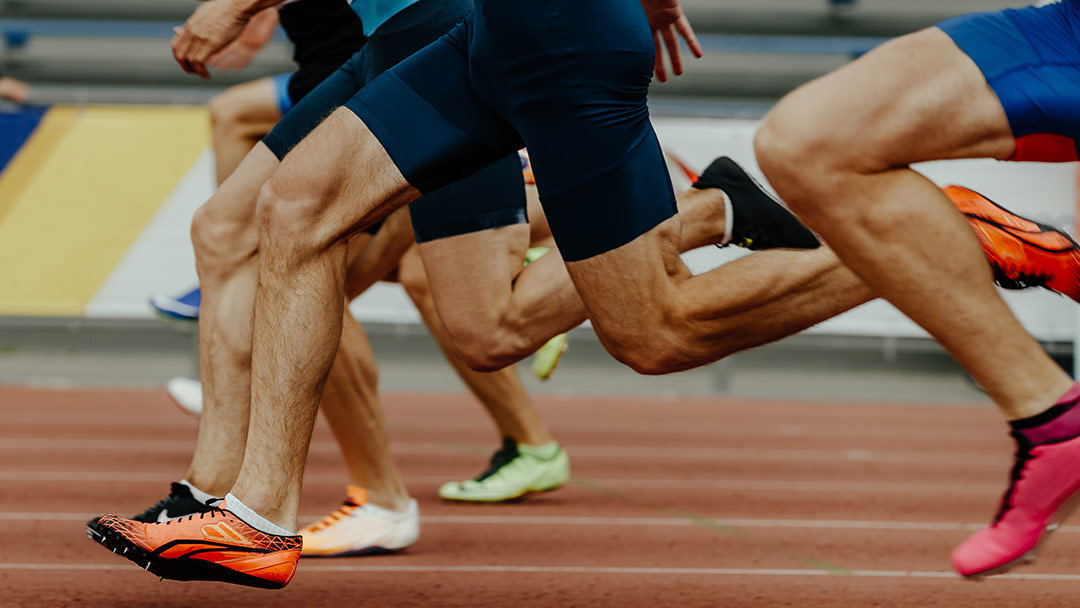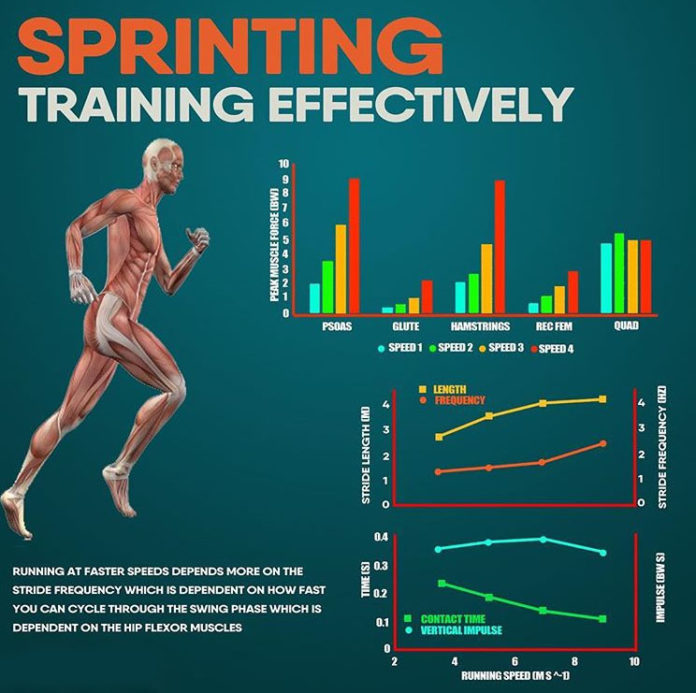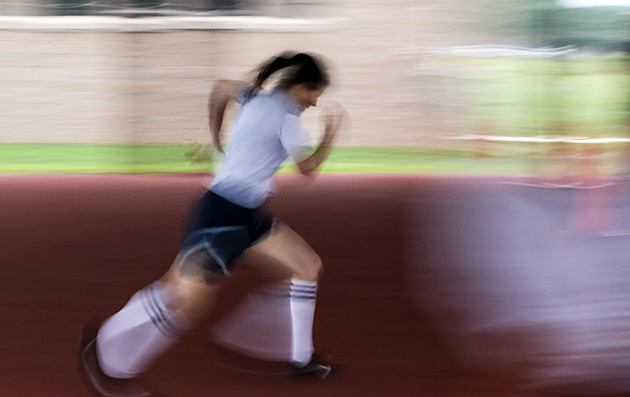What Constitutes a Sprint? Defining the Parameters
A sprint is a short, high-intensity running activity that typically covers distances ranging from 50 to 400 meters. The duration of a sprint usually varies between 5 to 30 seconds, depending on the distance and an individual’s fitness level. Sprinting requires rapid acceleration, explosive power, and anaerobic energy production, making it distinct from long-distance running, which relies more on aerobic metabolism and endurance.
Historical Context: The Evolution of Sprinting Abilities
Throughout history, human sprinting speeds have been a topic of interest and fascination. Over the years, advancements in training techniques, nutrition, and sports science have contributed to the improvement of average sprint speeds. In 1923, the world record for the 100-meter sprint stood at 10.6 seconds, while today’s record, set by Usain Bolt in 2009, is an astonishing 9.58 seconds.
Numerous factors have played a role in this evolution. Improved training methods, such as interval training and plyometrics, have allowed athletes to develop the power, speed, and agility necessary for optimal sprint performance. Additionally, advancements in sports nutrition have enabled athletes to optimize their energy intake, recovery, and overall performance. For instance, the introduction of carbohydrate loading in the 1960s and the more recent adoption of plant-based diets by elite athletes have significantly impacted sprinting performance.
Moreover, advancements in sports technology, such as wind tunnels and high-speed cameras, have allowed researchers and coaches to analyze sprinting mechanics and technique in greater detail. This information has been used to refine training programs and develop more effective coaching strategies, further enhancing sprinting abilities.
Demystifying the “Average”: Factors Influencing Sprint Speeds
When discussing the “average” human sprint speed, it is essential to acknowledge the various factors that can influence an individual’s performance. These factors include age, sex, and fitness level, among others. By understanding these variables, we can better compare individuals and appreciate the true range of human capabilities.
Age is a significant factor in sprint speed, as children and adolescents typically have slower sprint speeds than adults due to their ongoing physical development. However, as individuals age, muscle mass and strength tend to decline, which can negatively impact sprint speed. Therefore, it is crucial to compare individuals within the same age group when assessing average sprint speeds.
Sex is another critical variable to consider, as men, on average, have faster sprint speeds than women. This difference is primarily attributed to physiological factors, such as muscle mass, muscle fiber composition, and hormonal influences. Nonetheless, both male and female athletes can significantly improve their sprint speeds through targeted training and conditioning.
Fitness level is also a significant determinant of sprint speed. Highly trained athletes typically have faster sprint speeds than untrained individuals due to their superior strength, power, and biomechanical efficiency. However, even within the same fitness level, sprint speeds can vary significantly due to individual differences in genetics, technique, and motivation.
In summary, when discussing the “average” human sprint speed, it is vital to consider factors such as age, sex, and fitness level. By comparing individuals within the same demographic group, we can gain a more accurate understanding of human performance and potential.
How to Measure Sprint Speed: Best Practices and Tools
Accurately measuring sprint speed is crucial for tracking progress, assessing performance, and comparing individuals within the same demographic group. Various methods and tools are available for measuring sprint speed, each with its benefits and limitations.
One common method for measuring sprint speed is using electronic timing gates. These devices, often found at athletic facilities and sports clubs, provide precise timing measurements for starting and stopping sprints. Electronic timing gates typically consist of two components: a starting gate and a finishing gate. When an athlete crosses each gate, the device records their time, allowing for the calculation of their average sprint speed over a specific distance.
Another option for measuring sprint speed is using smartphone apps. These applications utilize the device’s built-in GPS and accelerometer to track an athlete’s movement and calculate their speed. While smartphone apps may not offer the same level of precision as electronic timing gates, they are a convenient and accessible solution for individuals looking to measure their sprint speed without specialized equipment.
When measuring sprint speed, it is essential to consider the following best practices:
- Ensure a consistent starting position and technique for each sprint.
- Measure sprint speed over a standardized distance, such as 20, 40, or 100 meters.
- Account for external factors that may impact sprint speed, such as wind resistance or running surface.
- Record multiple trials and calculate the average sprint speed to minimize the impact of outliers and improve measurement accuracy.
In conclusion, accurately measuring sprint speed is essential for understanding human performance and potential. By employing best practices and utilizing tools such as electronic timing gates and smartphone apps, individuals can gain valuable insights into their sprint speed capabilities and track their progress over time.
Comparing Sprint Speeds Across Demographics: Insights and Trends
Analyzing sprint speeds across different demographic groups, such as age, sex, and fitness level, can provide valuable insights into human performance and potential. By understanding these trends, individuals can better assess their own performance and set realistic goals for improvement.
In general, adult males tend to have faster sprint speeds than adult females, primarily due to physiological differences such as muscle mass and hormonal influences. However, both male and female athletes can significantly improve their sprint speeds through targeted training and conditioning.
Age is another critical factor in sprint speed. Children and adolescents typically have slower sprint speeds than adults due to their ongoing physical development. However, as individuals age, muscle mass and strength tend to decline, which can negatively impact sprint speed. Therefore, it is crucial to compare individuals within the same age group when assessing average sprint speeds.
Fitness level is also a significant determinant of sprint speed. Highly trained athletes typically have faster sprint speeds than untrained individuals due to their superior strength, power, and biomechanical efficiency. However, even within the same fitness level, sprint speeds can vary significantly due to individual differences in genetics, technique, and motivation.
According to a study published in the Journal of Sports Sciences, the average 100-meter sprint speed for male athletes aged 18-35 is approximately 10.5 seconds, while for female athletes in the same age group, the average time is around 12.0 seconds. These averages can vary depending on the population and sample size, but they provide a useful benchmark for comparing sprint speeds across demographic groups.
In summary, comparing sprint speeds across demographic groups can offer valuable insights into human performance and potential. By understanding these trends, individuals can better assess their own performance and set realistic goals for improvement. However, it is essential to compare individuals within the same demographic group to ensure a fair and accurate comparison.
Training Techniques for Enhancing Sprint Speed: A Scientific Approach
Improving sprint speed requires a well-rounded exercise program that incorporates various training methods. By understanding the science behind these techniques, individuals can optimize their training and achieve their performance goals.
Resistance training is a crucial component of any sprint speed training program. By strengthening the muscles involved in sprinting, such as the quadriceps, hamstrings, and glutes, athletes can improve their power output and acceleration. Incorporating exercises such as squats, lunges, and deadlifts into a resistance training program can help build the necessary strength and power for faster sprinting.
Plyometrics, or jump training, is another effective technique for improving sprint speed. Plyometric exercises, such as box jumps, bounding, and depth jumps, help develop explosive power and rapid force production. By incorporating plyometrics into a training program, athletes can improve their ability to generate force quickly, which is essential for fast sprinting.
Interval sprinting is a high-intensity training method that involves alternating between short, intense sprints and periods of active recovery. This technique helps improve anaerobic capacity, lactate threshold, and overall sprint speed. By incorporating interval sprinting into a training program, athletes can improve their ability to sustain high speeds for longer periods, leading to faster overall sprint times.
In addition to these training techniques, proper technique and biomechanics are crucial for optimizing sprint speed. Focusing on elements such as proper running posture, foot strike, and arm swing can help improve efficiency and reduce energy waste during sprinting. Working with a qualified coach or trainer can help athletes refine their technique and maximize their sprint speed potential.
In summary, improving sprint speed requires a well-rounded exercise program that incorporates resistance training, plyometrics, and interval sprinting. By focusing on proper technique and biomechanics, athletes can optimize their training and achieve their performance goals. By staying informed about the latest research and technological advances in sprint speed training, individuals can stay ahead of the curve and continue to push the boundaries of human performance.
Real-World Applications: The Impact of Sprint Speed on Daily Life
Sprint speed is not just a metric for athletic performance; it also plays a significant role in various aspects of daily life. From recreational activities to occupational tasks, maintaining speed and agility can have a positive impact on overall well-being and quality of life.
In sports and recreation, sprint speed is a crucial factor in many activities, such as soccer, basketball, and tennis. By improving sprint speed, athletes can gain a competitive edge and enhance their performance on the field or court. Additionally, participating in sprint-based activities can provide a fun and engaging way to stay active and improve overall fitness.
In the workplace, sprint speed can also have practical applications. For instance, firefighters and first responders must maintain high levels of speed and agility to perform their duties effectively. By incorporating sprint training into their fitness regimens, these professionals can improve their reaction time, mobility, and overall safety on the job.
Moreover, everyday activities, such as climbing stairs, carrying groceries, or playing with children, can benefit from improved sprint speed and agility. By maintaining these physical abilities, individuals can reduce their risk of injury, improve their functional fitness, and enhance their overall quality of life.
In conclusion, sprint speed is not just a metric for athletic performance; it also plays a significant role in various aspects of daily life. From sports and recreation to occupational tasks and functional fitness, maintaining speed and agility can have a positive impact on overall well-being and quality of life. By incorporating evidence-based training techniques, such as resistance training, plyometrics, and interval sprinting, individuals can improve their sprint speed and reap the benefits in all areas of their lives.
Future Directions: Technological Advances and Research Frontiers
As our understanding of human performance and potential continues to evolve, so too will the technology and research surrounding sprint speed. By staying informed and engaged in this ongoing conversation, individuals can take advantage of new developments and continue to push the boundaries of their physical abilities.
One potential area of growth is wearable technology. By integrating sensors and tracking devices into athletic clothing and equipment, researchers and coaches can gather real-time data on an athlete’s speed, agility, and biomechanics. This information can then be used to optimize training programs, identify areas for improvement, and reduce the risk of injury. As this technology continues to advance, it may become more accessible and affordable for everyday athletes, allowing them to track their progress and achieve their goals.
Another area of research is personalized training programs. By analyzing an individual’s unique physiology, biomechanics, and fitness level, coaches and trainers can create customized training plans tailored to their specific needs and goals. This approach can help maximize an athlete’s potential and improve their overall performance, whether they are a professional sprinter or a weekend warrior.
Additionally, researchers are continuing to explore the physiological and biomechanical factors that influence sprint speed. By understanding the underlying mechanisms that contribute to fast running times, scientists can develop more effective training techniques and interventions. For instance, recent studies have investigated the role of muscle fiber type, neural activation, and biomechanics in sprint performance, shedding new light on the complex interplay between genetics, training, and environment.
In conclusion, the future of sprint speed research and technology is bright, with many exciting developments on the horizon. By staying informed and engaged in this ongoing conversation, individuals can take advantage of new technologies, research findings, and training methods to improve their performance and achieve their goals. Whether you are a professional athlete, a fitness enthusiast, or simply someone looking to improve their speed and agility, the future of sprint speed research and technology holds endless possibilities for growth and exploration.


